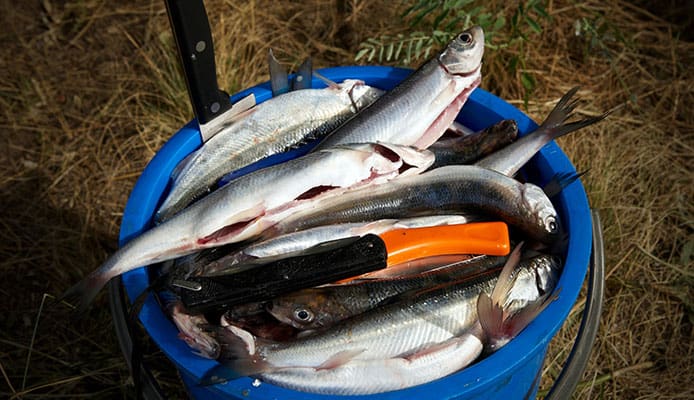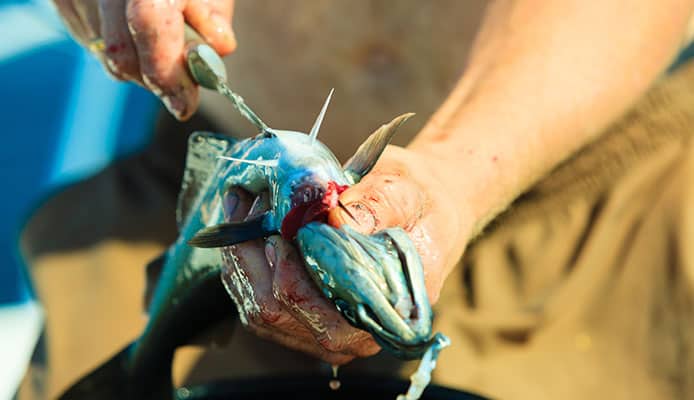-
1.
-
2.
-
3.
-
4.
-
5.
Whether it is a tranquil day at the pond or a heart-pounding day on the ocean, fishing is one of the most versatile sportspeople can enjoy. No matter the type of fishing or time spent on a fishing trip, a universal tool that every fisherman needs by their side is a high-quality fishing knife.
Fishing knives have many uses from cutting line to dicing bait, but a great fishing knife should have the ability to do it all. It is extremely important when buying a fishing knife, to choose a design that can withstand contact with fresh and saltwater, blood and a variety of other elements and working conditions. The best fishing knives are made of stainless steel and have a user-friendly design.
A great fishing knife is one of the most important tools for a fisherman and this list of the 10 Best Fishing Knives in 2023 can help you decide which design is best for you and your fish sporting needs. Here we breakdown 10 different knife designs, as well as go over which factors to consider when selecting a knife. Check out our list below to find the best fishing knife for you.
OUR TOP PICK
Smith and Wesson Extreme Ops Fishing Knife
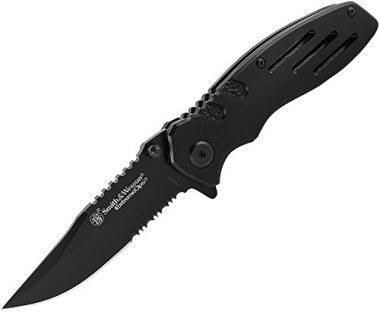
- What Makes This Fishing Knife Stand Out
- Black oxide stainless steel blade
- Partially serrated clip point blade
- Ambidextrous thumb knobs
- Comes with a pocket clip
Product Dimension: 7.1 inches (overall length)
Blade Length: 3.1 inches
Weight: 3.5 ounces
Materials: Stainless-steel and aluminum
EDITORS CHOICE
Morakniv Companion Fixed Blade Fishing Knife
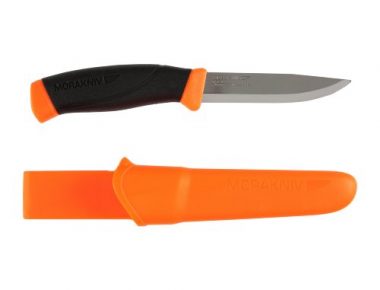
- What Makes This Fishing Knife Stand Out
- Stainless steel blade
- High friction grip
- Includes a sheath with a belt clip
- Comes with a limited lifetime warranty
Product Dimension: 8.6 inches (overall length)
Blade Length: 4.1 inches
Blade Thickness: 0.1 inch (2.5 millimeters)
Weight: 4.1 ounces (with sheath)
Materials: Stainless-steel and hard plastic
BEST VALUE
TAC Force Spring Assisted Fishing Knife
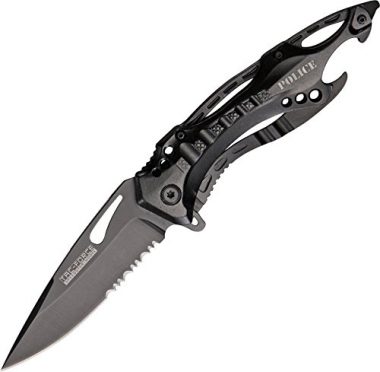
- What Makes This Fishing Knife Stand Out
- Spring assist for one-handed opening
- Half-serrated stainless steel blade
- Handle includes a bottle opener, glass breaker, and screwdriver
- Comes with a pocket clip for easy and convenient storage
Product Dimension: 4.5 inches (closed length), 8 3/8 inch (open length)
Blade Length: 3.25 inches
Blade Thickness: 3 millimeters
Weight: 4.8 ounces
Materials: Stainless-steel and aluminum
MTECH USA Ballistic Series Fishing Knife
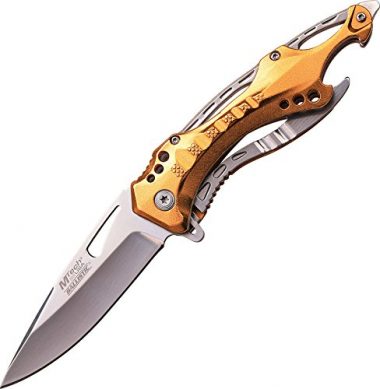
- What Makes This Fishing Knife Stand Out
- Titanium coated aluminum handle
- Stainless steel straight-edge blade
- One-handed opening system
- Includes a pocket clip, glass breaker and bottle opener
Product Dimension: 4.5 inches (closed length)
Blade Length: 3.75 inches
Blade Thickness: 3 millimeters
Weight: 4.8 ounces
Materials: Stainless-steel, aluminum, and titanium
Gerber Bear Grylls Folding Fishing Knife
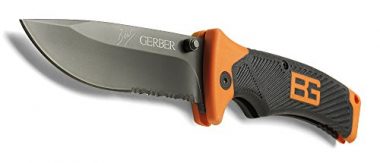
- What Makes This Fishing Knife Stand Out
- High carbon stainless steel blade
- Drop point blade with half serrated edge
- Rubberized handle for a secure and comfortable grip
- Comes with a protective military-grade sheath
Product Dimension: 8.5 inches (overall length), 4.9 inches (closed length)
Blade Length: 3.6 inches
Weight: 4.3 ounces (no sheath), 5.3 ounces (with sheath)
Materials: Stainless-steel, rubber, and nylon
Morakniv Craftline Fixed Blade Fishing Knife
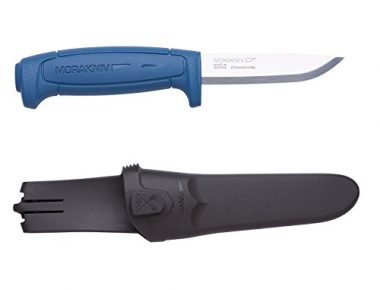
- What Makes This Fishing Knife Stand Out
- Stainless steel straight-edge blade
- Impact-resistant handle with a large shape for comfort
- Comes with a Combi-Sheath that allows you to attach an additional knife and sheath
Product Dimension: 8.25 inches (total length)
Blade Length: 3.6 inches
Blade Thickness: 0.2 centimeters
Weight: 4.1 ounces
Materials: Stainless-steel and hard plastic
TAC Force Spring Assist Half-Serrated Fishing Knife
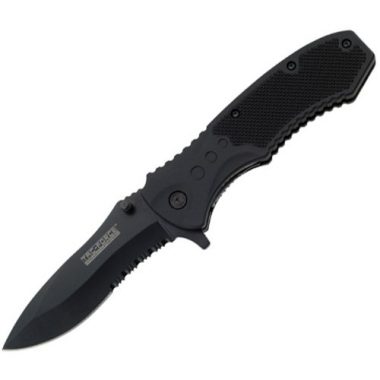
- What Makes This Fishing Knife Stand Out
- Stainless steel half-serrated blade
- Nylon fiber handle
- Includes a pocket clip for easy storage
- Spring assist one-handed opening
Product Dimension: 4.5 inches (closed length)
Blade Thickness: 3 millimeters
Weight: 5.6 ounces
Materials: Nylon fiber
Spyderco Harpy Folding Fishing Knife
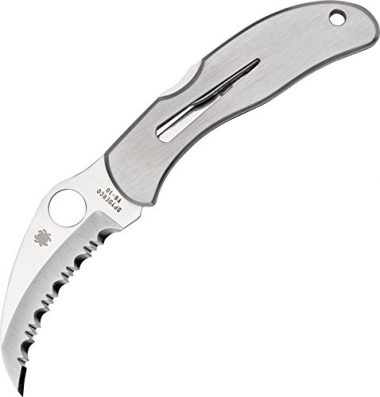
- What Makes This Fishing Knife Stand Out
- Stainless steel curved serrated blade
- Pocket clip and lanyard hole
- Drying vent to prevent rust
- Shackle key
Product Dimension: 6 x 1 x 1 inches
Weight: 3.2 ounces
Materials: Stainless-steel
Camillus Quick Release Folding Fishing Knife

- What Makes This Fishing Knife Stand Out
- Carbonitride Titanium non-stick blade
- Ergonomic G10 handle
- Quick-release mechanism
- Hollow-ground blade
Product Dimension: 8.75 inches (overall length)
Blade Length: 3.75 inches
Weight: 5.3 ounces
Materials: Carbonitride Titanium, stainless steel, fiberglass, and resin
Cressi Long Blade Fishing Knife
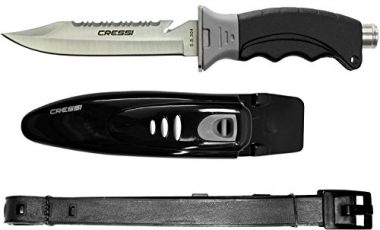
- What Makes This Fishing Knife Stand Out
- Specifically designed for diving and spearfishing
- Double-edged blade with a serrated and straight edge
- Locking sheath with quick one-hand release
- Ergonomic handle design to ensure a secure grip
Product Dimension: 10.43 inches (total length)
Blade Length: 5.51 inches
Weight: 1 pound
Materials: Stainless-steel
How To Choose The Best Fishing Knife – Buying Guide
A fishing knife is an extremely important tool for every fisherman, no matter where their trip takes them. Fishermen need a sturdy and handy tool at their disposal for any of the tasks they may face. If they need to cut line, rope, or dice up bait, they’ll need a fishing knife to get the job done. The best fishing knife will be sharp enough and versatile enough for any task at hand, leaving the focus on the fish and not on struggling with a dull blade.
When it comes down to choosing which blade to invest in, several factors can help you decide which tool is the best option. The most important factors to consider when purchasing a fishing knife is the blade and its size, flexibility, as well as material. Along with the blade, the handle’s size, flexibility, and material is also an important factor. You want a durable, dependable blade and that will allow you to do your work efficiently and without struggling.
This guide is here to help you discover these different factors and to help you consider what features you may need for your fishing knife. A great fishing knife can help you tackle any task at hand without interfering with your focus.
Blade Size, Flexibility, and Material
When it comes to choosing a knife, one of the most important elements of the design is the blade. After all, this is what you will be using to cut with. In order to choose which knife is best for your needs, you need to consider how often you will be using the knife and in what elements you will be using the knife.
If you are going to be fishing once in a while and will not use your fishing knife often, you can probably get by with a lower quality blade and still complete all the tasks you need. This can save you money, as you don’t need to invest in a top-quality blade. On the other hand, if you go fishing frequently you will want to invest in a high-quality blade. It can quickly become a money drain if you are buying a new knife every time you go fishing, just to ensure quality and sharpness. Rather, it is better to invest more in a one-time purchase and have a fishing knife that will last through countless trips.
The best fishing knife design will feature a stainless-steel material for the blade. Knives that are made of aluminum or hard plastic are not as durable and will not last as long. While other materials may save you an ounce on weight, a stainless-steel blade is worth that fraction more of weight. The lighter weight a blade is, the more likely you are to break it when cutting through tough material, such as fish scales. Fish scales may not seem that tough, but they are actually hard to cut into. Therefore, it is best to have a fishing knife that can cut through or pierce the fish scales with ease. This will allow you to properly fillet your fish. A proper high-quality fishing knife will not have an uneven edge, but a smooth or perfectly cut serrated edge for its entire length.
There are lots of different blades that all feature unique edging. Here is a breakdown of some of the more common blade edges. With this list, you can see the strengths and weaknesses of each blade design and choose which will best suit your fishing needs.
Hollow Grind – A blade that features a hollow grind has edges, on both sides, that curve into the middle until they meet. This means the blade’s edge is razor-sharp. One downfall to a hollow grind blade is that they tend to dull faster than other blades.
Asymmetrical Grind – A blade with an asymmetrical grind means each side of the blade can have a different style. An example of this would be a blade that has an edge with a curve on one side, while the other side could feature an angled bevel. A knife with different edges can offer multiple uses, but a downfall is you can only use one half of the knife at one time.
Flat Grind – A blade that features a flat grind is a knife with a grind that starts at the spine. This means that your knife will have an extremely sharp edge, but there are two downfalls. A flat grind is not as durable, and it is harder to sharpen.
Compound Bevel Grind – A blade with a compound bevel grind features a combination of a hollow grind with a concave design. As a result of this, the blade will not break or chip easily because the base of the knife is strong. However, while its strength as a benefit, the drawback is that the blade is not as sharp.
V Grind – A knife that has a V grind means that the grind of the blade starts close to its edge. A V grind allows for faster sharpening and molding to keep its shape. However, knives with a V grind tend to dull quickly and require maintenance to keep its shape. You will most likely have to sharpen and reshape this knife frequently.
Convex Grind – A convex grind means the blade has a curve to it or is convex. A blade with a convex edge can offer more sharpness and durability than other blades with different grinds. This blade will start closer to its edge and give durability to the knife. Furthermore, a convex grind will hold its shape for a long time, which is a major benefit. On the other hand, a major drawback is that a convex grind is very difficult to sharpen because of its curved and convex shape.
Chisel Grind – A knife with a chisel grind has blade edges with two specific and different designs. One blade edge, on one side, will be flat, while on the other side, the blade edge will be angled. On most blades, the angle will start in its middle and is extremely similar in appearance to that of a chisel, which is where it gets its name from. These two angles make for a very sharp blade, but it does dull faster than other blade grinds.
While there are many different grinds available to choose from when purchasing a knife, it is important to note the details and characteristics of each one. Matching your blade grind to the task you wish to complete, can save you time and money. On top of the grind of a blade, there are other important considerations to think about.
When it comes to what type of fishing you will do and where you will do it, the factors of fresh versus saltwater will heavily affect your choice of which blade to purchase. For the most part, freshwater will do minimal damage to a fishing knife because it is not as corrosive. You can easily rinse or wash your fishing knife with freshwater, allow it to dry, and still keep a sharp blade. Saltwater, on the other hand, can do a lot of damage to a blade. Saltwater is extremely corrosive and can quickly dull and rust a blade. It is best if you will be doing the majority of your fishing in the ocean, to buy a blade that is resistant to corrosion. The price of the knife does not necessarily reflect the quality of its anti-corrosiveness. If you do use your knife in saltwater, no matter how infrequently or frequently, it is best to wash your knife with freshwater after each exposure to saltwater and then allow it to fully dry. This will ensure you wash away any leftover salt residue that over time, if left on too long, can be corrosive to a blade. Keep in mind that even the best fishing blades made of stainless steel can succumb to corrosion over time due to exposure to saltwater.
The size, flexibility, and material of the blade can affect how well it performs a task. If you are looking to catch large fish, a larger blade would be a better choice for you. If you are looking to cut smaller fish or your fishing line, you may only want a small and compact knife to carry around with ease.
In addition to these factors, flexibility can be an important consideration when choosing a fishing knife. The flexibility of a blade is usually unique to each knife’s design and you should determine what level of flexibility you need based on what type of fish you are looking to catch. If a fish has tougher scales and skin, you want the blade to be less flexible so it doesn’t bend out of shape when you are attempting to cut through the skin and scale surface. If you are cleaning a smaller fish, greater flexibility will allow you to make delicate cuts. On average, most blades have a flexibility of 1-2 inches. Shorter blades will have more flexibility, whereas larger blades will have less to make them sturdier. The general rule to follow is: the thinner the blade the more flexible it will be.
The material of a blade can also determine its strength and durability. For long-lasting blades, look at investing in a knife made of stainless steel.
Handle Size, Flexibility, and Material
While the blade is the most important part of a fishing knife, the second most important part of the design is the handle. The handle is, after all, what you will use to hold and guide your knife. There are many different handle designs and many different materials that can be used to make the handle. While the handle design may not be the most important aspect of a fishing knife, it can certainly affect the durability and quality of your knife overall. It is not only the blade which needs to offer durability and longevity, the handle too must withstand multiple uses, while also feeling secure in your grip.
The good part about most handle materials is that they are durable and suited to most climates and conditions. Handles that are made of wood, hard plastic, rubber, or metal can all usually withstand sun, freshwater, saltwater, and most weather conditions. However, some may prefer a specific material for their knife handle, depending on how it feels to the touch.
It is best to buy a knife that you feel secure and confident holding. You need a steady grip to cut and many handles have different designs to aid your grip. Smooth knife handles may feel good to the touch, but if you want a little assistance with grip, a textured handled would be a better choice. Some people will prefer a handle not only to have texture but have ridges in the handle design to fit your fingers. This can assure a firm grasp of your knife and as a result safer use.
The width of the handle can also affect your motions when cutting and slicing with the knife. A wider handle may be too awkward for some to use and hold. While on the other hand, a knife with too skinny a handle may feel too flimsy for others. The ratio of the blade to the knife may also be an important factor. Do you prefer a knife that has a shorter handle or one with a longer handle? The choice is up to you.
Durability
Durability is the third most important factor when it comes to choosing your knife. As already mentioned, a strong blade and reliable handle can each affect the durability of a fishing knife, but to really get the best cuts, the knife needs to be durable in its overall design. The blade and the handle have to co-exist to work through tough conditions to consistently make sharp and accurate cuts.
Most fishing knives are durable and can complete the task at hand in various working conditions. However, a knife’s durability is also greatly affected by the material of which it is made. The majority of fishing knives are made of metal with the best choice being stainless-steel. There are various steels that have been given various treatments, but that does not mean that all steel is equal. Soft steel will not keep a sharp edge very well, even if it is constantly maintained, but offers more flexibility. Hard steel may hold its sharp edge better, but you will lose flexibility.
On top of the knife itself, a big factor in a knife’s durability is its user. The durability of a fishing knife can be greatly boosted if it is properly taken care of. A knife that is properly cared for will last longer and need to be sharpened less. If a knife is not properly cared for it will be more prone to rust, breakage, and it will dull faster. To extend the durability of your fishing knife, it is best to make a ritual out of cleaning and drying your blade after every use. If you take the steps to maintain the blade, the life of your knife will extend further, and you will get much better use out of it each time you take it on a fishing trip.
Use
It is important to establish the use of your knife before you make a choice and purchase one. The product description of each knife will offer information about its design and what needs it suits best. It is important to keep in mind where you will use your knife, how often you will use it, and what fish you will use your knife for. A fishing knife normally needs to be versatile in its use. Most fishermen want the ability to cut their fishing line and fillet a fish, without having to change their blades.
Where you will use your blade is also important because it can dictate what type of material you need a knife to be made of. Most fishing knives are made of stainless steel and for those who will be fishing in saltwater, it is a must-have. Saltwater is extremely corrosive and a strong metal with an anti-corrosive layer is best for the open ocean. It is also extremely important to factor in how often you will be taking your knife out on fishing trips. If you only occasionally go fishing, you probably don’t need to invest in the highest quality blade. But, if you are going fishing every week or even every day, you’ll want the best fishing knife available on the market. The kind of fish you will be cutting can also determine the type of knife you need. Smaller fish need smaller knives for delicate cuts. Whereas larger fish need larger knives to cut through the scales.
It is up to you to determine the use of your blade. Most blades can be used for a variety of tasks, but some may feature designs that cater specifically to a task you will be performing often.
FAQs
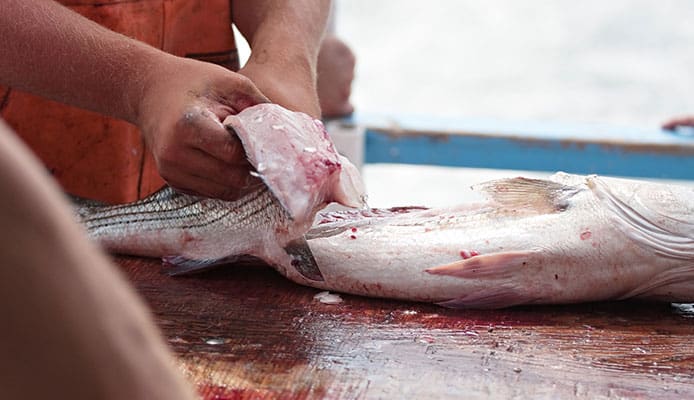
Q: How durable are fishing knives?
The best fishing knife will be extremely durable, and most knives are. There should be no doubt that even with a light gauge blade, durability is a guarantee. The flexibility that most fishing knives have in their blade design ensures that they can withstand massive amounts of force when being used. However, keep in mind that you can test your blade before you put it up to a task. When a knife is within its limit, the blade will easily bend to a point. When it is close to reaching its limit and risking damage to the knife, the blade will bend less with each added amount of extra pressure. When your blade’s flexibility seems less responsive, it means that you should ease up on the pressure because the blade is reaching its maximum limit. It is extremely dangerous to overbend any blade as it can cause the metal to snap and send a shard flying in an unexpected direction.
Q: Is it easy to sharpen fishing knives?
The answer is yes and no because it depends on the knife and the grind of the blade. Most fishing knives are easy to sharpen, especially if they come from a good quality manufacturer and are made of stainless steel. But, the flexibility of the knife can determine how easy it is to sharpen its blade. The more flexible a knife is, the harder it can be to use a whetstone to re-sharpen it. Flexible blades can give too much bend, which in turn makes for an uneven grind. The correct way to ensure the best sharpen of a blade when using a whetstone is to apply minimum pressure with the blade against the grinding stone. It is important to not over sharpen your blades. The absolute best way to sharpen the blades of most fishing knives is to apply even, but firm pressure. Most fisherman’s knives are thin and with just a little work, your blade will be back to razor-sharp in no time.
However, the grind of the knife will also affect the ease with which it is sharpened. Some grinds are easier to sharpen, while others take more skill. It is important to know which grind your knife is before you attempt to sharpen the blade. You can easily damage the blade trying to sharpen it to a hollow grind design if, in fact, it is an asymmetrical grind blade. If you are unfamiliar with sharpening blades, it is best to find a professional or someone who can teach you. Over time, as you get to know your knife, you can to learn how to sharpen it back to perfection.
Q: What is the best length?
The best length for a blade will depend on what you will be using the knife for. If you plan on catching and cleaning mostly small fish, a shorter blade will work for you. The shorter blade will give you more control to clean around the tiny bones. If you are catching larger fish, a larger knife will easily slice through both scales and skin to make steaks and cutlets. The best way to decide on the length of your knife is to look at the fish’s body from its back to its belly. You want the blade of your knife to be just a little longer than the depth of a fish’s body at its widest point. Matching the blade length to the depth of the fish will ensure your knife can go through the fish completely giving you a single, clean cut. This will also guarantee you are getting the most out of your fish and not wasting it.
Q: What is the difference between a regular fishing knife and a fillet knife?
A regular fishing knife, or boning knife, and a fillet knife are very similar, but they are not actually the same. A regular fishing knife will usually have a thicker blade that is not as flexible. This means you can easily carve and cut a large fish without worrying about damaging or snapping your blade. A fillet knife is used when you want to fillet a fish and need to make delicate, precise cuts around tiny fish bones. Fillet knives are usually thinner than a regular fishing knife, which gives it the flexibility and ability to beautifully fillet a fish. The best fishing knife would allow you to do both the tasks of a regular fishing knife and fillet knife in one blade, but it all depends on the fish and how you would like it to be cut. If you want to be specific, you can use both a regular knife and a fillet knife. However, most fishermen can find one knife that can do everything they need to at a high level of satisfaction.
Globo Surf Overview
When it comes to choosing the best fishing knife, the task can seem daunting. With so many factors, designs, abilities, and preferences, one can feel lost at sea while deciding which fishing knife to choose. We wrote this list and buying guide to break down the factors of choosing a knife into an easy-to-follow guide and help you in the selection process. You don’t have to feel overwhelmed when choosing a knife because here read through all the factors that will help you determine which blade is the best choice for you.
It is important to choose a knife that you feel confident and comfortable using because you will most likely be using it multiple times. Whether you fish only a couple times a year or go every day, a fishing knife will be your companion and you want it to be reliable. The best fishing knife will ensure that you are easily readying your fishing line or cleaning your fish in a stress-free environment. The best fisherman’s knife will also last you for years to come, consistently providing sharp cuts throughout multiple fishing trips.
More Fishing Reviews:
- Salmon Fishing Rod
- Crankbaits For Bass
- Ice Fishing Boots
- Catfish Rods
- Ice Fishing Lures
- Fluorocarbon Line
- Ice Fishing Shelter
- Crappie Rods
- Underwater Fishing Lights
- Fishing Drone



